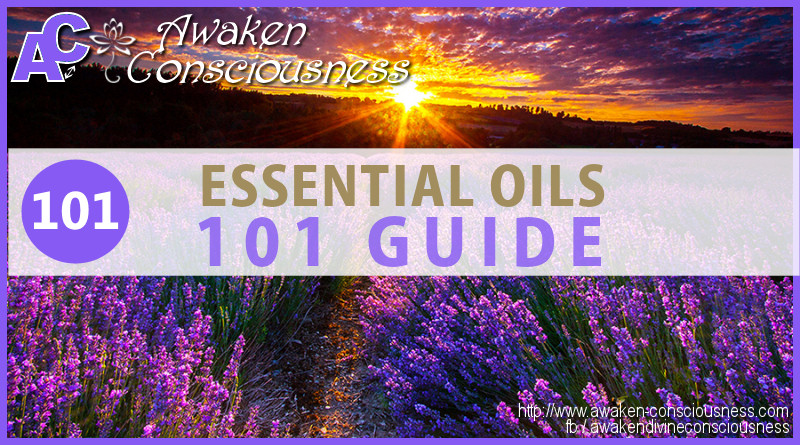Essential Oils 101 Guide
Essential Oils 101 Guide
What Are Essential Oils?
Essential Oils 101 Guide. If you have ever enjoyed the scent of a rose, you’ve experienced the aromatic qualities of essential oils. These naturally occurring, volatile aromatic compounds are found in the seeds, bark, stems, roots, flowers, and other parts of plants. Essential oils provide plants with protection against environmental threats and play a role in plant pollination. In addition to their intrinsic benefits to plants and being beautifully fragrant to people, essential oils have long been used for food preparation, beauty treatment, and health-care practices.
How Do I Use Essential Oils?
Essential oils are used for a very wide range of emotional and physical wellness applications. They can be used a single oil at a time or in complex blends in one of three methods:
Aromatic
Certain essential oils, when diffused, can be very stimulating, while others can be calming and soothing. Diffusing essential oils can also cleanse and purify the air of unwanted odors.
The sense of smell is a tool that can elicit powerful physiologic, mental, and emotional responses. Essential oils are quickly absorbed by the smell receptors, which have a direct link to the limbic system by way of the olfactory nerve. The limbic system is part of the brain that supports a variety of functions including smell, emotions, behavior, and memory. For this reason, essential oils have an especially powerful effect via aromatic application.
Some essential oils induce uplifting or invigorating effects, while others are more calming. Diffusion is one of the simplest methods for using essential oils aromatically. Diffusers that use cold air or water are ideal. However, using essential oils aromatically does not require any special diffusing devices.
You can achieve the same health benefits by simply placing a few drops of essential oil in the palm of your hand that is then cupped around the nose as you breathe deeply.
Additional aromatic uses For Essential Oils Include:
- Apply oil to a cotton ball and place in the air vents of your vehicle
- Mix oils in a spray bottle with water and mist over furniture, carpet, or linens
- Add oil to a batch of laundry or to dryer sheets
- Use in household surface cleaners
Support us with a cup of coffee?
If you like what Awaken Consciousness is offering you, would you please support us by buying us a cup of coffee? Any support and donation is very welcome and will allow us to keep going just a little longer and keep this website add free. Just slide the slider left <- or right -> to change the amount of coffee you'd like to share with us 😉 Thank you !
Topical
Essential oils are easily absorbed by the skin and can be safely applied topically. Topical application is a very effective method for applying essential oils. Because essential oils have low molecular weights and are lipid soluble, they easily penetrate the skin. Once absorbed, they stay in the applied area for a localized benefit.
Although essential oils are readily absorbed, there are many ways to increase absorption. Using a light massage will increase the blood flow to the area of application, in turn improving distribution throughout the body. Use of a carrier oil can also increase absorption, especially in skin that is dry or flaky as it helps moisturize the skin and slow evaporation of the oil.
To decrease the likelihood of developing a skin sensitivity, especially on young or sensitive skin, it is advisable to use a carrier oil (such as Fractionated Coconut Oil) to dilute more potent oils and when trying an oil for the first time. The recommend dilution ratio is typically one drop of essential oil to three drops of carrier oil.
It’s always advisable to use several small doses throughout the day rather than a single large dose. Start with the lowest possible dose (1–2 drops). A topical dose can be repeated every 4–6 hours as needed. Because every individual is unique, the dose will vary for each individual based on size, age, and overall health status.
Beneficial Areas You Can Apply Essential Oils
- Neck
- Forehead and temples
- Chest and abdomen
- Arms, legs, bottom of feet
Other Effective Methods of Topical Application
- Add a few drops of oil to a warm bath
- Make a hot or cold compress by soaking a towel or cloth in water, adding essential oils, and then applying to the desired area
- Add oil to a lotion or moisturizer and then apply to skin
Sensitive Areas to be Avoided:
- Some facial areas, such as the skin around the eyes
- Eyes and inner ears
- Broken, damaged, or otherwise injured skin
Internal
Certain essential oils have a rich culinary history and can be used as dietary supplements supporting a variety of healthy conditions. When you sprinkle cinnamon on your oatmeal, sip a mug of peppermint tea, or add fresh basil leaves to your spaghetti, you are actually consuming some volatile aromatic essential oil compounds.
Essential oil contributes many health benefits as well as flavoring and aroma properties to foods. When in their concentrated form, essential oils can be used as dietary supplements for more targeted and potent health benefits. Internal use is a very safe and effective method of application because of the sophisticated physiologic processes of our bodies.
When ingested, essential oils directly enter the blood stream via the gastrointestinal tract, where they are transported throughout the rest of the body. Essential oils are lipid soluble so they are readily transported to all organs of the body, including the brain. Then, like all things we consume, essential oils are metabolized by the liver and other organs and are then excreted.
The composition of essential oils is highly complex. Each constituent possesses a unique set of biochemical properties that react with cells and organs in different ways. Although these mechanisms of action are not completely understood, the positive end results have been demonstrated. However, the body is only equipped to handle appropriate doses of essential oils.
Proper dosing according to labeling recommendations and other professional guidelines should be strictly followed to avoid toxicity.
Effective Methods of Internal Application
- Use oils in recipes for cooking or baking to replace fresh or dried herbs and spices
- Remember that essential oils are much more potent than dried or fresh herbs and spices, so start with a very small amount
- For more potent oils, it may be better to administer them by toothpicks (dip the end of a clean toothpick into the oil and then add to the food) rather than drops
- Add essential oils to water, smoothies, milk, tea, or other drinks
- Take essential oils internally in a veggie capsule or add to a small amount of applesauce or yogurt
Essential oils are both exciting and promising when it comes to taking care of your own and your family’s health. Whether you’re applying essential oils topically, enjoying the aromatic benefits through diffusing, or taking essential oils internally, the positive effects of essential oils are boundless.
That’s why you’ll want to ensure that the essential oils you are using are capable of delivering on their promise. You’ll want to make sure that you are choosing essential oils for their potency and their purity.
Making sure you use the best oils available.
CPTG Certified Pure Therapeutic Grade — An Innovative Standard
- Pure and natural, with aromatic compounds carefully extracted from plants
- Free from fillers or artificial ingredients; no dilution of active qualities
- Free of contaminants, pesticides, or chemical residues
- Rigorously tested for standards of chemical composition
- Cross tested using mass spectrometry and gas chromatography to ensure exact purity and composition potency
- Sourced by a global network of leading essential oil chemists and growers to ensure correct species, growth in ideal environments, and that raw plant materials were carefully harvested at the right time
Healing Abilities of CPTG Essential Oils
Essential Oils are often used to treat a myriad of illnesses and conditions. Instead of using often side effect laden allopathic medicine, essential oils offer an natural solution for prevention, treatment and after care.
A few examples what essential oils are used for:
- antiseptic and antimicrobial agent for oral infections. Clove and eucalyptus have the greatest anti-microbial ability over E. coli and also exerted considerable control over Staph aureus and Pseudomonas aeruginosa, two bacteria that oftentimes lead to pneumonia and skin infections.
- Frankincense essential oil has also been used with much success to treat issues related to digestion, the immune system, oral health, respiratory concerns and stress/anxiety.
- Lavender is wonderful for accelerating healing time for burns, cuts, stings, and other wounds.
- Various citrus essential oils are widely used to stimulate lymph drainage, to rejuvenate sluggish, dull skin and as a bug repellant.
- Several research studies have demonstrated the improving effect on performance, changes in blood count, antibacterial, antifungal and immunomodulating abilities of oregano oil
- Pleasantly suitable for an abundance of oral and topical uses, peppermint may be the most versatile essential oil in the world. Literally, there are few issues that it can’t help
- One amazing healing effect of rosemary that many people are unaware of is its ability to normalize blood pressure.
- According to research published last year, sandalwood essential oil also has an uncanny ability to inhibit both tyrosinase and cholinesterase, which affects several physiological processes from melanin production to proper nervous system function. The results were so significant that scientists concluded that, “There is a great potential of [sandalwood] essential oil for use in the treatment of Alzheimer’s disease!”
- Tea tree (Melaleuca alternifolia) is a wound healer with a rich history of use as a local antiseptic for burns and cuts as well to treat a wide spectrum of bacterial and fungal infections (including athletes foot and jock itch)
Support us with a cup of coffee?
If you like what Awaken Consciousness is offering you, would you please support us by buying us a cup of coffee? Any support and donation is very welcome and will allow us to keep going just a little longer and keep this website add free. Just slide the slider left <- or right -> to change the amount of coffee you'd like to share with us 😉 Thank you !
Support us with a cup of coffee?
If you like what Awaken Consciousness is offering you, would you please support us by buying us a cup of coffee? Any support and donation is very welcome and will allow us to keep going just a little longer and keep this website add free. Just slide the slider left <- or right -> to change the amount of coffee you'd like to share with us 😉 Thank you !




